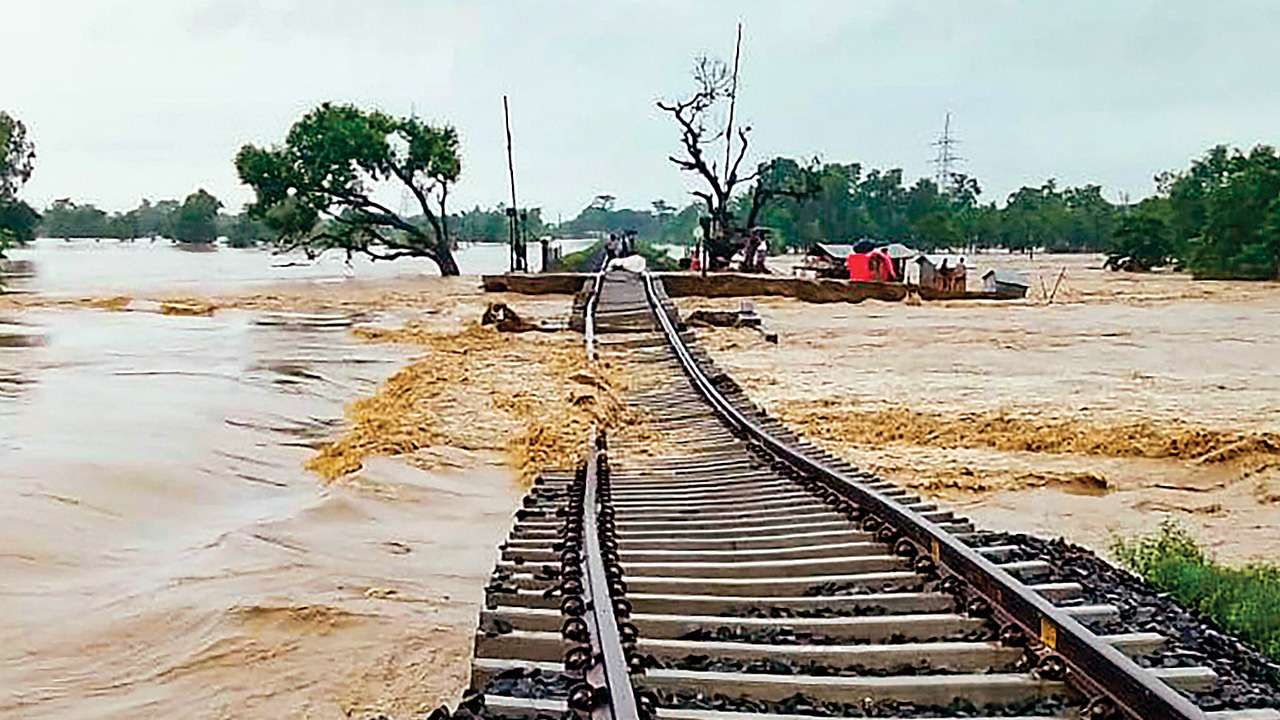
A country’s development is, often, measured by its ability to contain natural disasters. It is never easy, and often unpredictable, but nations have come around to tackle natural calamities at its worst. It is a sign that citizens of the country are economically prosperous and that it has developed an infrastructure that is solid enough to tackle nature’s fury, particularly those that occur on a yearly basis. On that score, India has been found severely wanting. This year, more than 200 people, at a conservative estimate, have lost their lives and millions have been evacuated amid unusually heavy rains this month. The damage to property due to this monsoon mayhem is still being estimated and there are all indications that it is going up in the days ahead. Often during times of heavy rainfall, drainage systems in residential areas are not adequate, or unchecked civil development severely impedes the functionality of an otherwise acceptable drainage system.
Floods cause large numbers of fatalities in every country, but due to India’s extremely high population density, the damages are huge and the number of casualties very high. India witnesses excessive rain, which results in overflow of rivers, lakes and dams then leading to floods. In the past, this country has witnessed most catastrophic floods, causing irreparable damage to people’s livelihood, property and much-needed infrastructure. Sadly, the story repeats itself every year. Climate change has played an important role in causing large-scale floods, particularly across central India, including the Mumbai floods of 2006 and 2017.
According to one estimate, between 1901-2015, there has been a three-fold rise in extreme rainfall events, across central and northern India — Gujarat, Maharashtra, Madhya Pradesh, Chhattisgarh, Telangana, Odisha, Jharkhand, Assam, and parts of Western Ghats — Goa, north Karnataka and South Kerala. This rise is attributed to a rise in the fluctuations of the monsoon westerly winds because of increased warming in the Arabian Sea. This results in occasional surges of moisture transport from the Arabian Sea to the subcontinent, causing heavy rains. According to a UN estimate, natural disasters have cost India close to $80 billion in the past 20 years.
Globally, there may be a direct relationship between development and loss from natural disasters. Once incomes go up, people start looking at climate change-resilient infrastructure. That, though, is not happening in India. More than ever before, any infrastructure development needs to factor in the risk of the effects of climate change; not doing that is an open invitation to trouble. Already, states have been forced to raise huge amounts of money for relief and rehabilitation in the aftermath of floods. In 2018, this amount was pegged at over Rs 30,000 crore for Kerala. This year, Karnataka chief minister BS Yediyurappa has put the damage bill of the August floods at Rs 40,000 crore. Clearly, India will have to start thinking ahead.